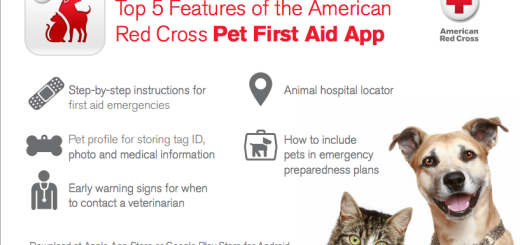Cardiopulmonary Resuscitation (CPR) Overview
CPR, kiss of life, resuscitation, heart massage. There are numerous terms used for Cardiopulmonary Resuscitation (CPR) by the media and general public. These terms can sometimes lead to confusion around CPR and what it actually involves.
All the cells in your body require Oxygen to survive. They also require a good supply of nutrients and rapid removal of waste products. Oxygen and nutrients are carried around the body in your blood, which is pumped by your heart. In your lungs, Oxygen enters your blood stream and Carbon Dioxide (a waste product) is removed.
A “Cardiac Arrest” is when your heart stops beating. This is not the same as a “heart attack“, although a heart attack may lead to a cardiac arrest. There are numerous causes of cardiac arrests, including:
- A heart attack
- A disturbance in the heart rhythm
- Drugs/poisoning
- Heart disease
- Traumatic injury/blood loss
If a cardiac arrest occurs, blood will stop circulating around the body. Breathing will also cease as well (though breathing may not stop completely for several minutes). A patient in cardiac arrest is classed as clinically dead.
Without a supply of Oxygen, the cells in the body start to die. Brain cells are incredibly sensitive, after about 4 -5 minutes of no Oxygen brain cells will start to die leading to permanent brain damage and death.
When is CPR Used?
CPR is used in emergency situations when a person has gone into cardiac arrest or accidents that are similar to a cardiac arrest. It is needed when a person has no heartbeat or has stopped breathing.
Although the human body usually has enough oxygen still present in the blood to keep the brain and other organs supported and alive for a couple of minutes, it still doesn’t circulate unless the patient receives CPR.
Therefore, through CPR, blood circulation gets restored, and oxygen supply is provided to the vital organs when the heart isn’t functioning anymore.
How to Do CPR?
Here are the steps involved in performing CPR:
- In case the patient isn’t breathing, place one of your hands over the other, putting them in the center of their chest. If the patient is a child, make use of one hand and put it right above the bottom of their breastbone.
- Push your hands down hard in the center of the patient’s chest by applying as much force with your body weight.
- Perform chest compressions of 100 to 120 times per minute by pushing down two inches every time. Ensure that their chest gets to come all the way back up in between the compressions.
- If you have CPR training, pause the chest compressions to perform two mouth-to-mouth rescue breaths for every 30 chest compressions.
- Continue with the chest compressions and rescue breaths till the person gets revived.
Here is how a rescue breath should be performed:
- Tilt the patient’s head back a little, keep their chin up, and pinch their nose closed.
- Make their chest go up by closing your mouth over theirs and blowing a normal-sized breath into it.
- After performing two rescue breaths, go back to giving them chest compressions.
What Happens After CPR?
After a patient has received CPR, paramedics take over the responsibility of saving the person you performed CPR on. The process of CPR ensures that the organs and brain keep receiving enough oxygen.
A defibrillator is used on the patient to revive the rhythm of their heart. Since a defibrillator isn’t always around when someone needs CPR, it is usually brought by the paramedics or the police. Once the ambulance crew arrives, the patient gets taken to the hospital.
What are the Risks or Complications of CPR?
The risks or complications of CPR include:
- Aspirating and vomiting: Since CPR involves forceful chest compressions, it could lead to vomiting, which in turn can lead to aspiration, which means inhaling the vomit into the lungs.
- Broken ribs: Fracturing or cracking of ribs can occur during CPR due to chest compressions, especially among older individuals and those who have fragile bones.
- Internal brain injuries: If CPR is performed incorrectly, it can increase the risk of brain damage as the brain could receive about 5% less oxygen than usual during CPR.
- Abdominal distension: As CPR involves air being pushed forcefully into the lungs during chest compressions, it could cause the patient’s abdomen to get bloated and filled with air.
- Aspiration pneumonia: A person receiving CPR can inhale vomit or foreign objects, including teeth, into their lungs. This can lead to aspiration pneumonia.
Will CPR Break Ribs?
CPR often leads to broken ribs, especially when the resuscitation efforts are too intense.
A routine cardiac arrest can also lead to broken ribs due to the immense pressure applied to the chest cavity while performing CPR. This is especially common among older adults, particularly those who suffer from osteoporosis, as their fragile bones are vulnerable to more injuries.
However, cracked ribs are not as big a hazard as loss of life, as these broken ribs usually heal in a couple of weeks.
The risk of having one’s bones cracked during CPR is about 30%. This depends on factors such as the person’s age, their health condition, and quality of chest compressions that are delivered.
Will the casualty wake up?
Unfortunately this is very unlikely to happen. By doing chest compressions, you are taking over the job of the casualty’s heart (which has stopped) by forcibly compressing it. In effect, you are acting as a life-support machine for the person.
In order for the heart to be restarted, it may require an electrical shock from a defibrillator (right) or drugs given by a paramedic/doctor. CPR on its own is very unlikely to restart someone’s heart.
However, good quality chest compressions will significantly increases the chance of the defibrillator being able to restart the heart.
When should I stop doing CPR?
Only stop CPR if:
- The casualty shows signs of life: coughing, breathing etc.
- You are asked to stop by a healthcare professional (ambulance crew etc.)
- You become too exhausted to continue
- The situation suddenly becomes too dangerous
Ideally, you should only carry out CPR for a couple of minutes before swapping with someone else. This is to ensure that the chest compressions remain of good quality.
How to carry out CPR: video
Now you’ve read this article, have a go at our free CPR quiz!
FAQs
What does CPR stand for?
CPR stands for cardiopulmonary resuscitation.
Why is CPR used?
CPR is used when someone has stopped breathing, or their heart has stopped.
What are the two main parts of CPR?
The two main parts of CPR are chest compressions and rescue breathing.
What is the full form of BLS?
The full form of BLS is basic life support.
What is the ratio for CPR?
The ratio for one-person CPR is 30 compressions to two breaths.
Conclusion
Most of the cardiac arrests that happen tend to take place outside of a hospital. Therefore, by knowing about CPR and how to perform it, you could be helping not only a loved one, but also a stranger on the road who might need your assistance with a life and death situation.
Getting trained in CPR is also a good path to consider. That way, you will know exactly what to do when someone requires your help.






